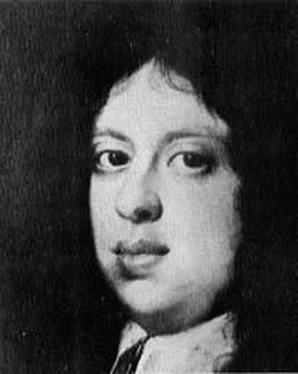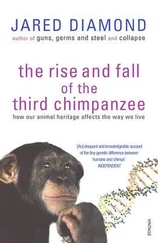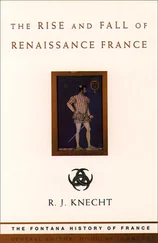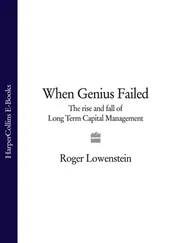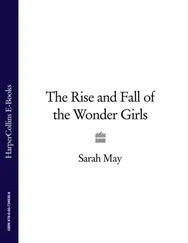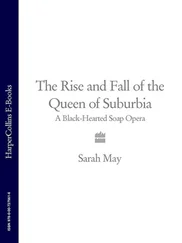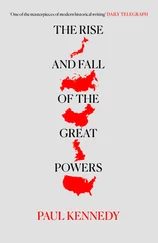The Florentines detested Francesco’s mistress, Bianca Capello, for whom this Villa Pratolino had been built, maintaining that she was a witch, that she possessed the evil eye, that she had poisoned the wretched Joanna of Austria. When – her husband having been disposed of – Francesco married her at a wedding which was alleged to have cost no less than 30,000 florins, the people’s indignation was unbounded.
Yet outraged as they were by Francesco’s behaviour, there were other members of his family whose shameful conduct disgusted them even more. The most iniquitous of all was his younger brother, Pietro, who at the time of Francesco’s succession was twenty years old. An emotionally unstable parasite and profligate, Pietro not merely neglected his wife, Eleonora, but openly insulted her. She consoled herself with various lovers, including Bernardino Antinori, who was first imprisoned in his palace for killing one of his rivals in a duel and then exiled to Elba after his mistress had been seen walking up and down the street beneath his windows in the hope of catching sight of him. 4He was later brought back to Florence to face trial and execution by strangulation in his cell in the Bargello. The distracted grief displayed by Eleonora on learning of her lover’s fate so infuriated Pietro that he summoned her to Cafaggiolo where he strangled her, with the evident approval of the Grand Duke.
It was not the only murder in Francesco’s family. His sister, Isabella, was quite as unhappy in her marriage as her brothers had been and took for a lover her husband’s cousin, Troilo Orsini. Her husband, Paolo Giordano Orsini, a violent, vindictive man, had himself fallen desperately in love with Vittoria, the young and passionate wife of Francesco Accoramboni. They had taken it into their unbalanced minds to rid themselves of both Isabella and Accoramboni and then to marry each other. First Vittoria had her husband killed by professional murderers at the Villa Negroni. Then Orsini, having paid other assassins to kill his cousin, Troilo, murdered his wife at their villa of Ceretto Guidi near Empoli. 5He did so in a peculiarly macabre way: having waited until they had finished dinner, he signalled for four accomplices in the room above to let down a rope through a hole in the ceiling. Pretending to kiss her, he strangled his wife with the rope which the accomplices then pulled back into the room above. Announcing that Isabella had died of a sudden apoplectic seizure, Orsini soon afterwards married Vittoria, ignoring a papal ban imposed upon the marriage by Gregory XIII, and took her off to his castle at Bracciano. The horrifying affair might there have ended had not Gregory XIII died and been succeeded by Sixtus V. The new Pope was not only a relentlessly severe pontiff, determined to repress the disorders and lawlessness which had become so scandalous in the times of his predecessor, but was also the murdered Francesco Accoramboni’s uncle. Rather than attempt to defend himself at Bracciano against the Pope’s troops, Orsini fled to Venice where he died. He left a will bequeathing his great wealth to Vittoria who was consequently stabbed to death in Padua by her husband’s aggrieved brother who had hoped to be his heir.
His reputation sinking ever lower in a sea of scandal, the Grand Duke Francesco retreated from the world into the isolated privacy of Pratolino where he fed his goldfish and his Swedish reindeer, planted the rare shrubs that were sent to him from India and talked of cosmography, chemistry and the secrets of nature. Whole days were spent in his garden house at Pratolino and in the laboratory which Vasari built for him at the Palazzo Vecchio where, towards the end of his life, he even held meetings with his Ministers, unwilling to leave the chemical and other scientific experiments which so absorbed him. He had other interests, too, which kept his mind from business: on the third floor of the Uffizi, which had been completed by Bernardo Buontalenti and Alfonso Parigi after Vasari’s death in 1574, he created an art gallery and established studios for young artists. In 1583, he also established the Accademia della Crusca (the Chaff), an academy for ridding the Tuscan language of its impurities, and, indeed, for maintaining the supremacy of Florence as the only worthy arbiter of Italian literary taste – a function the Accademia performed so vigorously that it had the playwright, Girolamo Gigli, expelled from the Duchy for the unpardonable affront of declaring that Saint Catherine of Siena was a better writer than that great Florentine of blessed memory, Giovanni Boccaccio. 6But it was chemistry and alchemy, smelting and glass-blowing, gem-setting and crystal-cutting that occupied most of Francesco’s time. He became, indeed, an acknowledged expert: he was adept at making vases from molten rock crystal and precious metals; he invented a new way of cutting rock crystal and a revolutionary method of making porcelain which enabled Tuscan potters to produce exquisite wares comparable to those imported from China. 7He also developed ingenious methods of manufacturing fireworks and imitation jewellery. Yet even his scientific experiments brought him vilification rather than credit: locked up there in that noisome laboratory he was manufacturing poison to be used by that witch, Bianca. The notion seemed only too credible when in October 1587 they both suddenly died – in fact, of malarial fever – on the same day.
Francesco’s brother and successor, Ferdinando I, who assured his people that the deaths had been due to natural causes, had spent most of his life in Rome. He had gone there in 1563 as a fifteen-year-old cardinal, and within ten years had become an influential member of the Sacred College. Though he had little taste for religious life he founded the missionary society of the Propaganda Fide and proved himself a capable administrator. He also found ample opportunity to indulge his enthusiasm for classical statues of which he assembled a large collection, mostly Roman copies of Greek originals, including the Venus de’ Medici. He bought a villa on the Pincio in which to display them, 8and on his brother’s death brought many of them back with him to Florence where six statues of Roman women, restored by Carradori, were placed inside the Loggia dei Lanzi.
Ferdinando was thirty-eight years old at the time of his accession, a far more genial man than his brother whom he had never liked. Though extravagant and ostentatious, he immediately displayed a sincere concern for the well-being of Florence, and showed himself determined to maintain her independent position – if necessary, by force – in contrast with Francesco’s policy which had been to avoid trouble at any price. Under Ferdinando’s relatively benign yet efficient rule the government became less corrupt, the finances more stable, while trade and farming flourished. Hospitals were built in Florence and a college for scholars was founded at Pisa. The fleet, originated by his father, became more powerful; and Leghorn – ‘the masterpiece of the Medicean dynasty’, as Montesquieu called it – was further developed and populated with new citizens from all over Europe who were drawn to it by the Grand Duke’s promise of religious toleration, a promise that attracted not only persecuted Protestants but so many Jews that there is still today a higher proportion of Jews in Leghorn than in any other Italian city. By numerous acts of kindness and magnanimity the Grand Duke Ferdinando endeared himself to the people. He inaugurated, for example, a new and enjoyable ceremony at San Lorenzo where every year he distributed dowries to poor girls who might otherwise have found it difficult to find suitable husbands; and in the winter of 1589, when the Arno in full flood caused havoc in Florence and the surrounding countryside, he personally distributed baskets of food to the victims of the disaster and then made a perilous journey in a small boat to promise help to stricken villages.
Читать дальше
